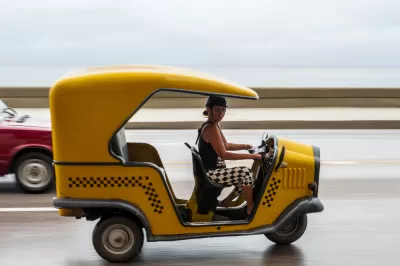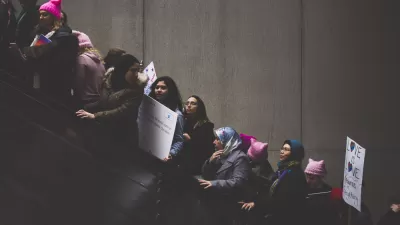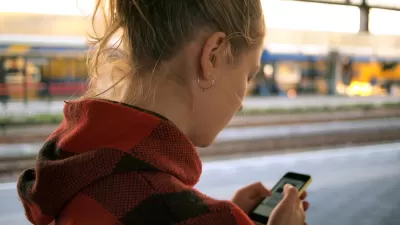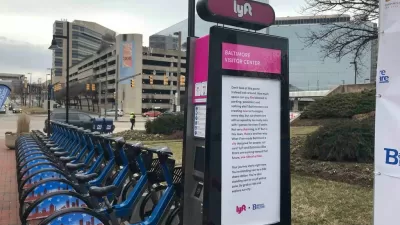In Mexico, one popular app illustrates the feasibility and efficacy of women-only transportation models.

In recent years, a variety of strategies have been proposed to improve women's safety during travel: Women-only buses and metro cars. Women-only taxis. A panic button in ride-hailing cars. And finally: the women-only ride-hailing app. In CityLab, Maya Kroth profiles the rise of Laúdrive, a women-only ride-hailing app in Mexico that skyrocketed in popularity after the murder of a woman by her ride-hailing driver this year.
Women-only apps have struggled to break into the duopolized ride-hailing market, faced with the same policy challenges plaguing dominant companies on top of the perils typical to any specialized startup. The model has appeared, and then declined, in several countries; in the U.S., it could be considered gender-based discrimination. In fact, researcher Alex Rosenblat tells CityLab that the subset's very existence is an indictment of the industry as a whole.
Rosenblat says the demand for women-only services points to a flaw in the current ride-hailing model, which relies on a user-ratings system to foster trust between strangers.
“Customers are expected to perform this task of flagging errant behavior,” she says. “Neither drivers nor passengers are paid for that kind of work, but the success of safety at scale implies the free labor that people are willing to perform. It’s clear that ratings don’t solve everything.”
And while strategies that isolate women can materially improve safety outcomes on a trip-by-trip basis, they don't address the larger question of women's ability to move and exist freely in the public realm. Mexico is beginning to devote attention to this issue, Kroth reports, but it remains a defining characteristic of cities around the world.
FULL STORY: In Mexico, Momentum Builds for Women-Only Ride-Hailing Apps

Alabama: Trump Terminates Settlements for Black Communities Harmed By Raw Sewage
Trump deemed the landmark civil rights agreement “illegal DEI and environmental justice policy.”

Planetizen Federal Action Tracker
A weekly monitor of how Trump’s orders and actions are impacting planners and planning in America.

How Atlanta Built 7,000 Housing Units in 3 Years
The city’s comprehensive, neighborhood-focused housing strategy focuses on identifying properties and land that can be repurposed for housing and encouraging development in underserved neighborhoods.

In Both Crashes and Crime, Public Transportation is Far Safer than Driving
Contrary to popular assumptions, public transportation has far lower crash and crime rates than automobile travel. For safer communities, improve and encourage transit travel.

Report: Zoning Reforms Should Complement Nashville’s Ambitious Transit Plan
Without reform, restrictive zoning codes will limit the impact of the city’s planned transit expansion and could exclude some of the residents who depend on transit the most.

Judge Orders Release of Frozen IRA, IIJA Funding
The decision is a victory for environmental groups who charged that freezing funds for critical infrastructure and disaster response programs caused “real and irreparable harm” to communities.
Urban Design for Planners 1: Software Tools
This six-course series explores essential urban design concepts using open source software and equips planners with the tools they need to participate fully in the urban design process.
Planning for Universal Design
Learn the tools for implementing Universal Design in planning regulations.
Jessamine County Fiscal Court
Caltrans
Institute for Housing and Urban Development Studies (IHS)
City of Grandview
Harvard GSD Executive Education
Toledo-Lucas County Plan Commissions
Salt Lake City
NYU Wagner Graduate School of Public Service





























